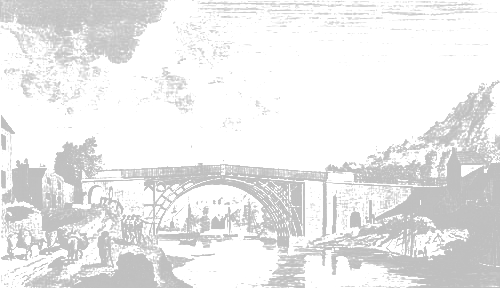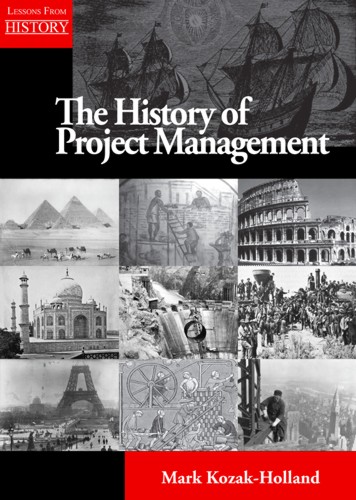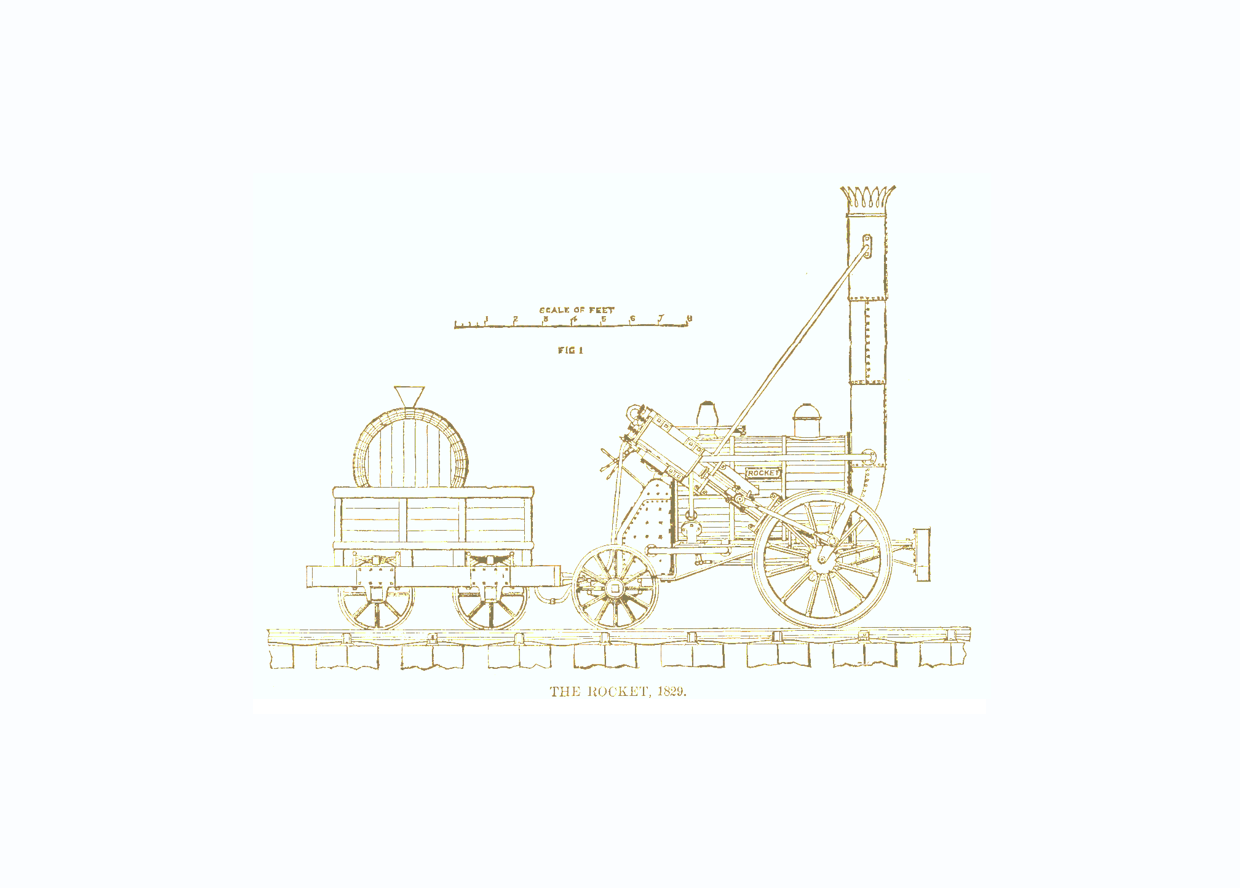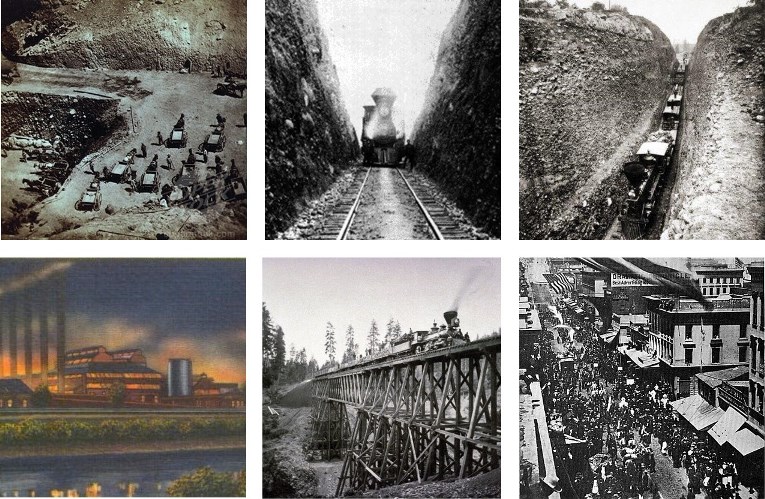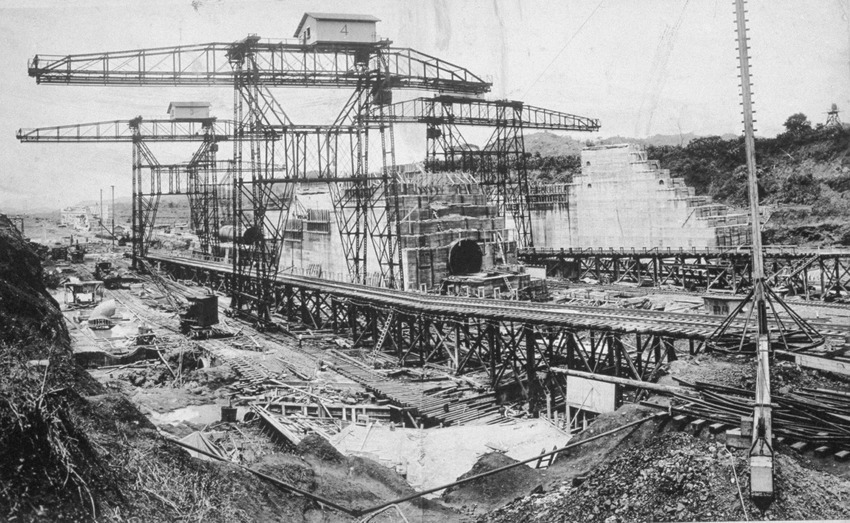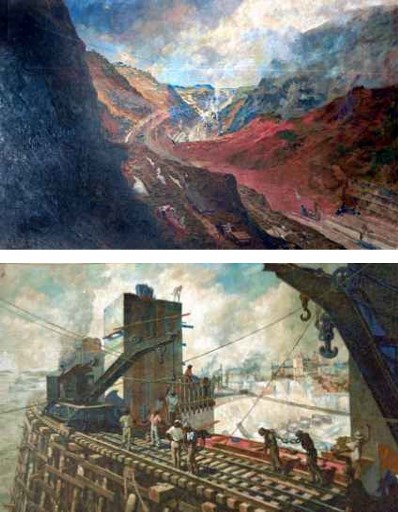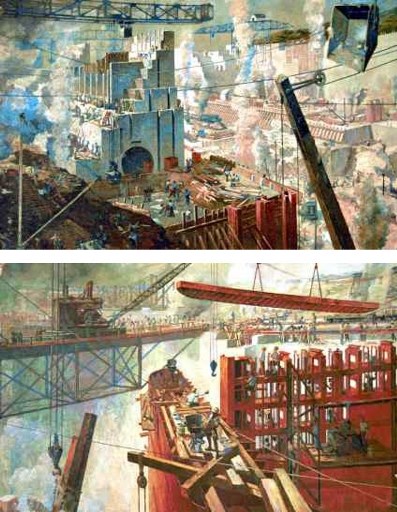Industrial Eras
Through the Industrial Revolutions
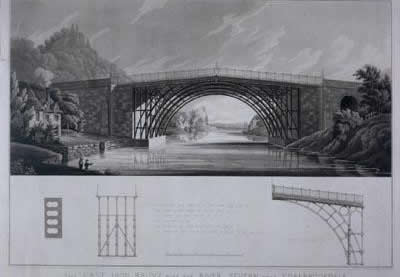 The industrial revolution (phase 1) started when iron was significantly improved in quality, and at a lower cost. Cheaper iron spurred the evolution of steam power and the steam engine, over several decades. By 1750 the revolution began to pick up pace as the steam engine started to be introduced and applied to different problems which further spurred advances in steam technology. The availability of cast iron made it a logical choice for structures like bridges as it was considerably lighter than a stone bridge with a larger arch span. The Iron Bridge project, over the River Severn in Coalbrookdale, exemplified the challenges faced by these projects and the complexities of these new materials and technologies. For example, the project estimates were so significantly off it bankrupted Darby the project builder.
The industrial revolution (phase 1) started when iron was significantly improved in quality, and at a lower cost. Cheaper iron spurred the evolution of steam power and the steam engine, over several decades. By 1750 the revolution began to pick up pace as the steam engine started to be introduced and applied to different problems which further spurred advances in steam technology. The availability of cast iron made it a logical choice for structures like bridges as it was considerably lighter than a stone bridge with a larger arch span. The Iron Bridge project, over the River Severn in Coalbrookdale, exemplified the challenges faced by these projects and the complexities of these new materials and technologies. For example, the project estimates were so significantly off it bankrupted Darby the project builder.
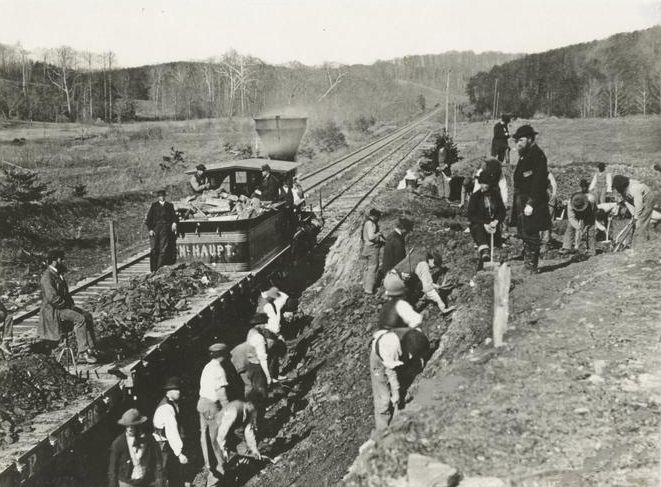 Into the 19th century (phase 2) and the drop in production costs for materials like concrete and iron was a catalyst for growth in infrastructure projects for transportation like canals, bridges, and rails. With this there was a progressive rise in mega projects, that were vastly more complex and required much planning. For example, the U.S. Transcontinental Railroad project, built in 6 years, half the expected time, needed a vast supply chain stretching 30,000 kilometers (18,000 miles). Similarly, the Transatlantic Cable project pushed technologies to the limit in trying to establish a working linking at depths of 4 miles. These were landmark projects in this phase of the industrial revolution.
Into the 19th century (phase 2) and the drop in production costs for materials like concrete and iron was a catalyst for growth in infrastructure projects for transportation like canals, bridges, and rails. With this there was a progressive rise in mega projects, that were vastly more complex and required much planning. For example, the U.S. Transcontinental Railroad project, built in 6 years, half the expected time, needed a vast supply chain stretching 30,000 kilometers (18,000 miles). Similarly, the Transatlantic Cable project pushed technologies to the limit in trying to establish a working linking at depths of 4 miles. These were landmark projects in this phase of the industrial revolution.
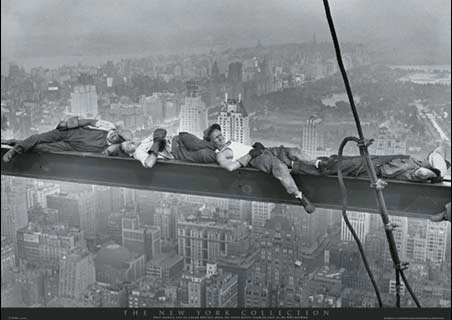 By the end of the 19th century the newly industrialized world with mass production required a system to supply large quantities of raw materials, resources, man power, equipment and organization. It needed more sophisticated systems of transportation, storage, manufacturing, assembly, and distribution. Further a rapidly expanding workforce of thousands needed to be taken care of in terms of housing, health, welfare, and education. All this brought in new institutions, establishments, and organizations. A host of new emerging technologies break through namely, the chemical industry which grows out of the manufacture of fertilizers to include the exploitation of fossil fuels. The revolution also created the internal combustion engine which leads to the birth of the automotive industries. In parallel, the electrical industry develops from the electrical dynamo and motor which leads to an explosion of consumer driven electrical devices and telephones. This was the Second Industrial Revolution which leads to the mega infrastructure projects of the 20th century that create road networks, hydro dams, electical and telephone networks.These colossal changes in the Western World required a far more structured and disciplined approach to business and management, based on scientific research and principles, as the scale of objectives changed. With this came the birth of management principles in the business world, to become the backbone of project management, driven by a few key individual contributors in the field. The First World War mobilized continents with huge armies and resources into a global conflict which proved to be a prolonged war of stalemate. It manifested the industrialization of war and leveraged mass production, mass transportation, and mass mobilization. By 1918 the logistical operation supplying the British Expeditionary Force was one of the largest the world had ever seen. This further accelerated work in planning and supplying.
By the end of the 19th century the newly industrialized world with mass production required a system to supply large quantities of raw materials, resources, man power, equipment and organization. It needed more sophisticated systems of transportation, storage, manufacturing, assembly, and distribution. Further a rapidly expanding workforce of thousands needed to be taken care of in terms of housing, health, welfare, and education. All this brought in new institutions, establishments, and organizations. A host of new emerging technologies break through namely, the chemical industry which grows out of the manufacture of fertilizers to include the exploitation of fossil fuels. The revolution also created the internal combustion engine which leads to the birth of the automotive industries. In parallel, the electrical industry develops from the electrical dynamo and motor which leads to an explosion of consumer driven electrical devices and telephones. This was the Second Industrial Revolution which leads to the mega infrastructure projects of the 20th century that create road networks, hydro dams, electical and telephone networks.These colossal changes in the Western World required a far more structured and disciplined approach to business and management, based on scientific research and principles, as the scale of objectives changed. With this came the birth of management principles in the business world, to become the backbone of project management, driven by a few key individual contributors in the field. The First World War mobilized continents with huge armies and resources into a global conflict which proved to be a prolonged war of stalemate. It manifested the industrialization of war and leveraged mass production, mass transportation, and mass mobilization. By 1918 the logistical operation supplying the British Expeditionary Force was one of the largest the world had ever seen. This further accelerated work in planning and supplying.
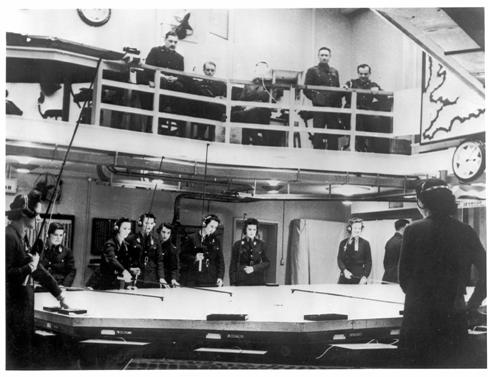 Between the two world wars new disciplines were formulized notably, human relationships (between employer and employee), an evolution in marketing (and its importance) and industrial human relations school of management arose to deal with the practical problems caused by Taylorism and the grindless repetition of tasks. The Third Industrial Revolution, from 1940 to today, has been dominated by computers both electro-mechanical and electronic, information, and the Internet. It also saw the institutionalization of management practices into business. This was accelerated by the second world war which brought mega projects to the fore front. For example, the adaptive system created for the Battle of Britain (1940), the Colossus computers at Bletchley Park (1943), the Normandy Invasion or D-day (1944), and the Manhattan project (1945). The Cold War reflected the manifestation of the third industrial revolution and the advances made in the use of information/intelligence in the second world war. It also saw the development of a large number of projects related to planes, rockets, and complex technology required by the US Air Force and Navy based on experiments and prototypes in the Second World War. These projects saw the first use and development of both CPM (Critical Path Method) and PERT (Program Evaluation and Review Technique) techniques and charts giving project managers greater control.
Between the two world wars new disciplines were formulized notably, human relationships (between employer and employee), an evolution in marketing (and its importance) and industrial human relations school of management arose to deal with the practical problems caused by Taylorism and the grindless repetition of tasks. The Third Industrial Revolution, from 1940 to today, has been dominated by computers both electro-mechanical and electronic, information, and the Internet. It also saw the institutionalization of management practices into business. This was accelerated by the second world war which brought mega projects to the fore front. For example, the adaptive system created for the Battle of Britain (1940), the Colossus computers at Bletchley Park (1943), the Normandy Invasion or D-day (1944), and the Manhattan project (1945). The Cold War reflected the manifestation of the third industrial revolution and the advances made in the use of information/intelligence in the second world war. It also saw the development of a large number of projects related to planes, rockets, and complex technology required by the US Air Force and Navy based on experiments and prototypes in the Second World War. These projects saw the first use and development of both CPM (Critical Path Method) and PERT (Program Evaluation and Review Technique) techniques and charts giving project managers greater control.
Latest Tweets
Sorry, twitter is currently unavailable.

